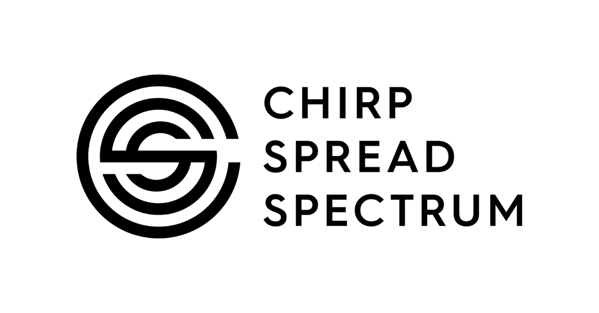Chirp, also known as Chirp Spread Spectrum (CSS) is a unique radio frequency technology that enables wireless communication in a multitude of scenarios, from tracking livestock in large outdoor farms to offering collision awareness in underground mines. It’s been in the industry for over 20 years and is known as a powerful 3-in-1 solution for Real-Time Location Systems (RTLS), ranging and communication.
Chirp’s use cases include:
- Collision awareness and avoidance in industrial scenarios, where reliability is critical
- Smart warehouses or factories where location tracking introduces a level of automation
- In outdoor scenarios across long ranges, or as a second technology or safety net if GPS fails
- To track personnel in hazardous scenarios to stay accountable for everyone
- For yard management outside a facility, to maintain transparency between indoor and outdoor operations
- In very large facilities where long ranging would be useful (and to save money), since less anchors are needed to be deployed with chirp compared to other RF technologies
In this post, we’ll take a trip down memory lane to examine the history of chirp and where it is today.
The Early Beginnings of Chirp

Chirp works by transmitting data between devices through radio waves, and communicating using signals also known as chirps. This communication technique is actually used in the natural world by animals like dolphins and bats. These chirps were then introduced in technology settings for radar applications, in 1940s by Professor Hüttmann. In 1947, Sidney Darlington, a lifetime IEEE fellow, further developed chirp in radar applications during his time in research.
Then in 1996, the development continued with Canon patenting chirp pulses for data transmission in fiber optic systems. As chirp operates on the 2.45 GHz ISM band, it was also used in military applications for reliable communication with protection against interference. Many of the advancements of Chirp Spread Spectrum since the 1990s continued with nanotron Technologies, a leading provider of electronic location awareness solutions, later acquired by Inpixon.
Chirp’s History with Inpixon – A Timeline of Events
- 1991 – nanotron Technologies was founded by Manfred Koslar: The vision was to design a chip for the wireless age, creating data communication at the lowest energy cost. He was inspired by the idea of ranging so he’d always know his wallet was in close proximity.
- 2003 – The first nanotron chip was created: The IC: nanoNET chip was used for wireless communication for autarkic and embedded use cases. Ranging was not yet enabled.
- 2004 - Jens Albers becomes nanotron’s new CEO: Albers later on paves the path for an RTLS solution using chirp.
- 2005 - New nanotron patent: The patent is for the symmetrical multi-path method for determining the distance between two transmitter-receivers.
- 2006 - New nanotron Chip Released: The IC nanoLOC TRX chip was for a long tracking range at meter accuracy. In the next year, nanotron would release the first nanoLOC AVR module in a medical setting.
- 2008 – RTLS is prioritized: Albrecht Rommel, Director System Architecture introduces RTLS to nanotron’s roadmap.
- 2008 & 2009 - New releases: nanotron introduces the nanoPAN module and nanoANQ anchor.
- 2011 - New nanotron patent: This patent was for the method and system for multipath reduction for wireless synchronizing and/or locating in the EU. By 2012, nanotron gets a similar patent in the USA.
- 2011 - nanotron's first TDoA installation: This was the first proof of the running system in a real-world application. Later in 2011, nanotron had their first TDoA installation for livestock health.
- 2012 - Market expansion: nanotron has its first TDoA project in logistics.
- 2013 - New release: nanotron releases the nanoANQ XT anchor for harsh, rugged environments.
- 2014 - Market expansion: nanotron has its first mining pilots with RTLS using TDoA, and by 2015, mining would become an established market.
- 2015 – New releases: The swarm bee LE (v1) tag was used for location solutions in positioning, ranging, and communication, and the swarm bee API offered extended API support for simplified location awareness and cost-reduction.
- 2016 - New Release: nanotron introduced its Toolbox 3 productivity tools used to optimize the planning, integration, installation, configuration and maintenance of RTLS.
- 2017 - Sensera acquires nanotron: This acquisition meant the fusion of sensors and location application, with an entrance in the IoT market.
- 2018 - Award win: nanotron wins a Geo IOT World award for indoor location and proximity services.
- 2020 - Inpixon acquires nanotron: With this acquisition, Nadir Ali becomes the new CEO and the product line is extended to include indoor mapping and security.
- 2020 - New release: Inpixon launches the swarm chirp V3, an advanced RTLS tag module for real-time positioning.
- 2021 - New releases: Inpixon introduces the nanoANQ chirp V3 PCB, a newly improved and affordable anchor at a reduced size. They also later released the chirp asset tag, for long-range RTLS asset tracking.
- 2022 - Certification: Inpixon’s Swarm Chirp V3 get certified by FCC/CE Certification Testing and ISED (Innovation, Science and Economic Development Canada), meaning shorter time to market and lower cost for integrators to certify end-products.
Get to Know the Core Functions of the Chirp Spread Spectrum Today
Inpixon is now a leader in chirp technology, providing solutions like the Inpixon Asset Tag, nanoANQ Chirp anchor, nanoANQ Chirp PCB circuit board and Swarm Chirp module. This technology provides chirp-enabled solutions in location tracking, ranging and communication in a variety of real-world scenarios across multiple industries such as construction, mining and livestock management.
Chirp’s key attributes include its:
- Robustness, with its resiliency against interference even in challenging industrial environments
- Flexibility, offering long ranges from 300 meters to 500 meters (up to 1000 meters in optimal conditions) and indoor & outdoor capabilities
- Scalability, as its long ranging reduces the number of required anchors and the fact that it can be deployed outdoors without a license due to its ISM band of 2.45GHz
- Reliability, as it’s been used in TDoA-based RTLS and TOF-based CAS scenarios for over 20 years
But that’s only scratching the surface of what chirp provides to organizations today. To learn more about chirp technology and how it stands out among other RF technologies, download our free chirp whitepaper or contact us today!


